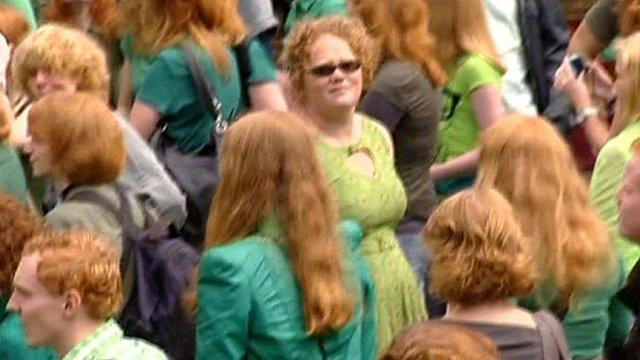In pictures: Connecting the world's redheads
- Published
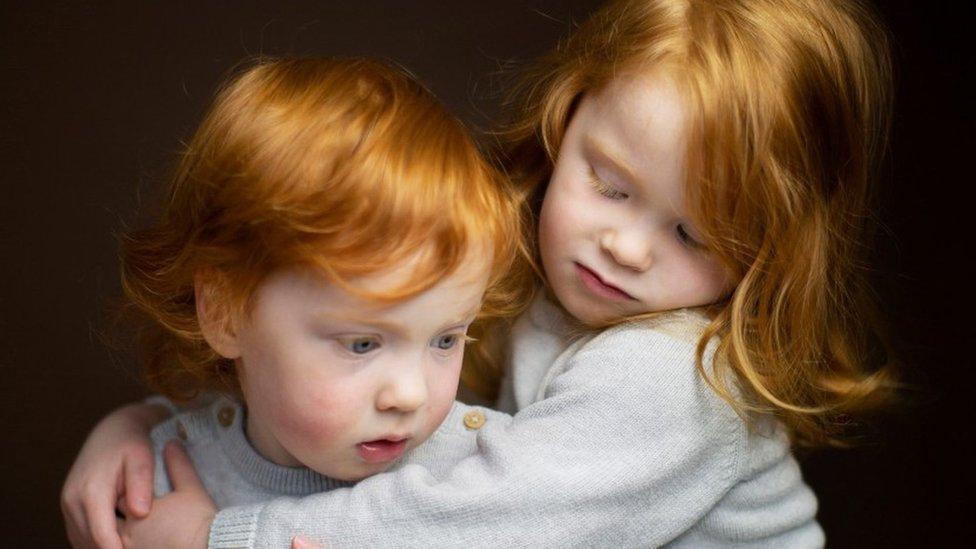
Kieran's twin daughters are featured in his book
Over the past seven years, Scottish photographer Kieran Dodds has been taking pictures of people from around the world with ginger hair.
Kieran himself is "pale and ginger", what he calls a cliché of Scottish national identity, but he wants to use the hair colour to illustrate a global phenomenon.
"It's not about hair," he says. "It's about humanity and how we are all made of the same stuff. With the ginger hair you can see that connection."
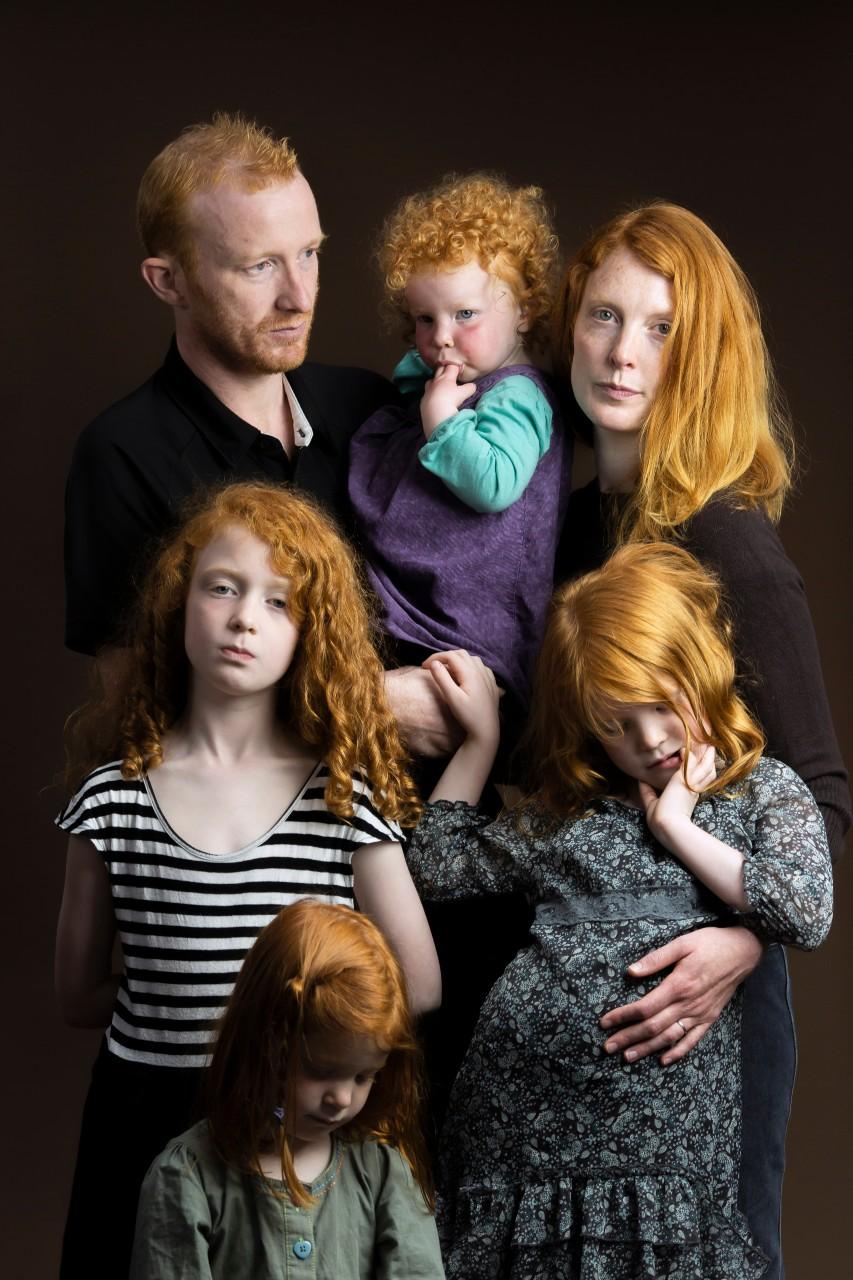
Clockwise: Steven McKay, Esther, Rebecca (mother), Chloe, Lois and Abigail, Scotland

Scotland is an international hot spot for redheads and Kieran had no trouble finding and photographing them in his homeland.
But he also attended World Redhead Day in London, where he met people from around the globe.
He then travelled to the Russian city of Perm, another ginger hotspot, which is as far east as Iran and is at a similar latitude to the north of Scotland.
Redheads are more common in northern latitudes as the gene adaptation allows for the absorption of vitamin D with little sunlight.
However, Kieran also travelled to the Caribbean to photograph red-haired Jamaicans in a place called Treasure Beach, a result of a complex genetic inheritance which is likely to have involved Scottish sailors and settlers.
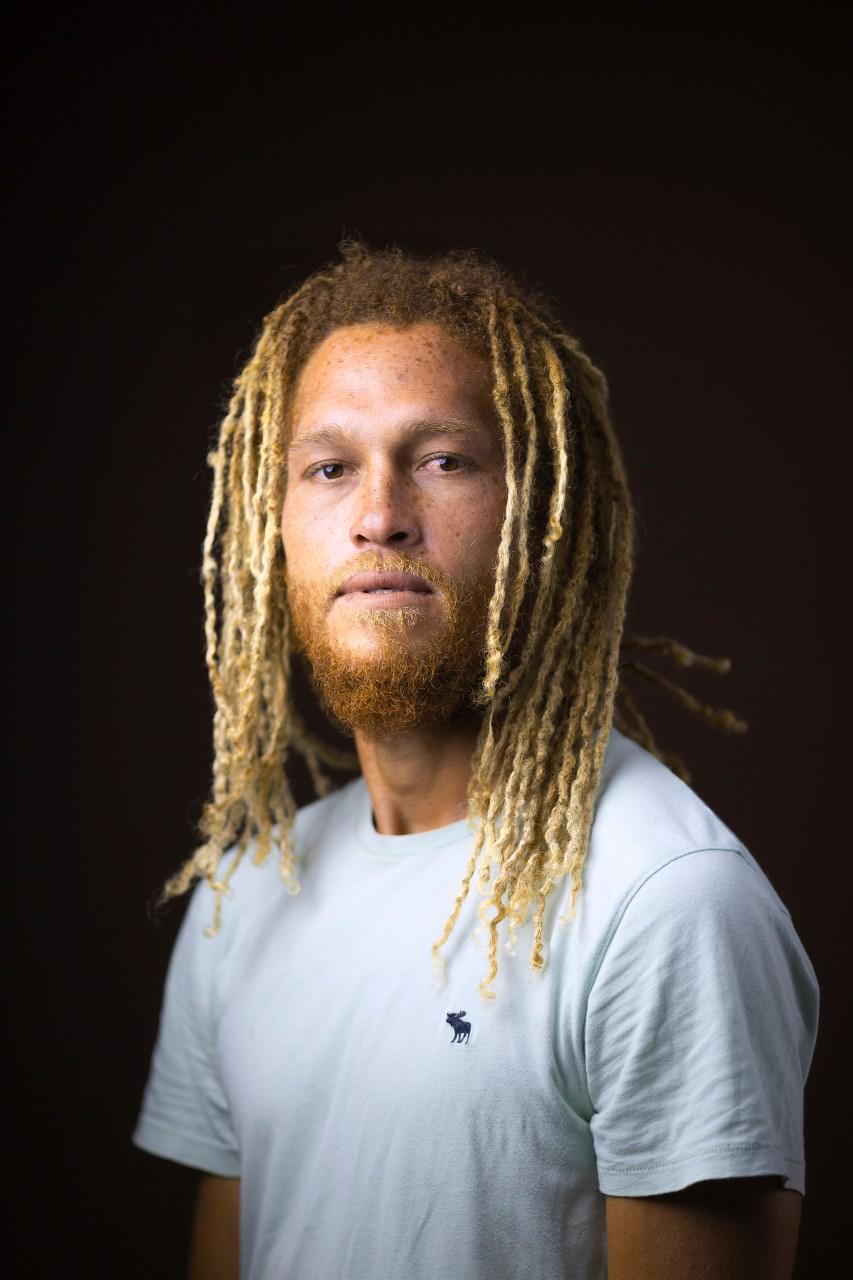
Randy Wong, Jamaica, born 1988

The result of Kieran's project is a book called Gingers.
He chose the title despite the term often being used as an insult.
"I feel like it is actually quite a good description," he says. "Because the hair colour is not red like a post-box or your blood, it is a mixture of gold and yellow and red all mixed together."
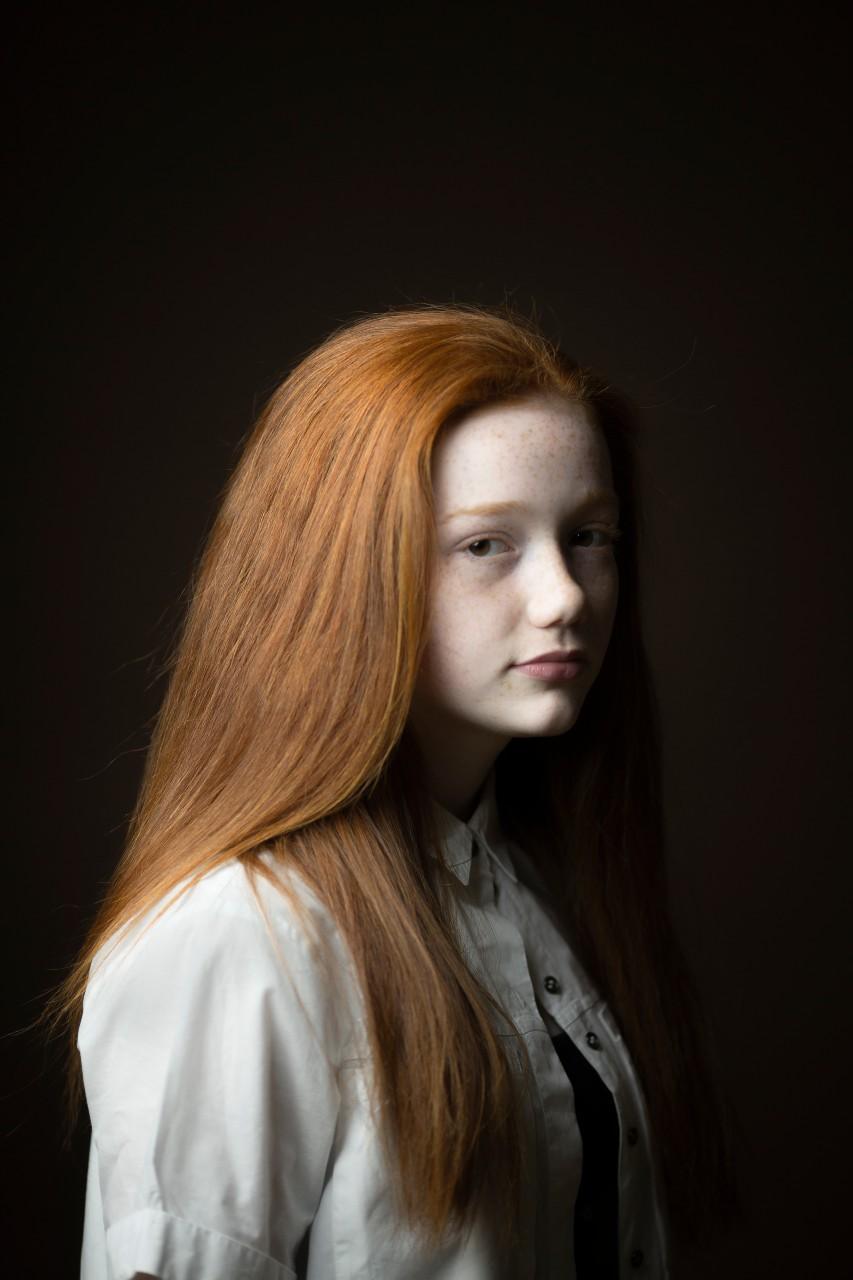
Lucy Fleming, Scotland, born 2005

The 39-year-old says his own experience of growing up with ginger hair was echoed in many of the conversations he had with the people he photographed, no matter where in the world they grew up.
"It is very similar for most places," he says. "It is something that people thought was amazing and complimented you for as a kid.
"Then there is this period of primary school into secondary where it is a very visible trait and you stand out for it, so you get abuse or stupid insults.
"But once you are through that, if you have not come out too badly, people start to embrace it, almost as their unique selling point, their special power, and see it as an important part of their identity."
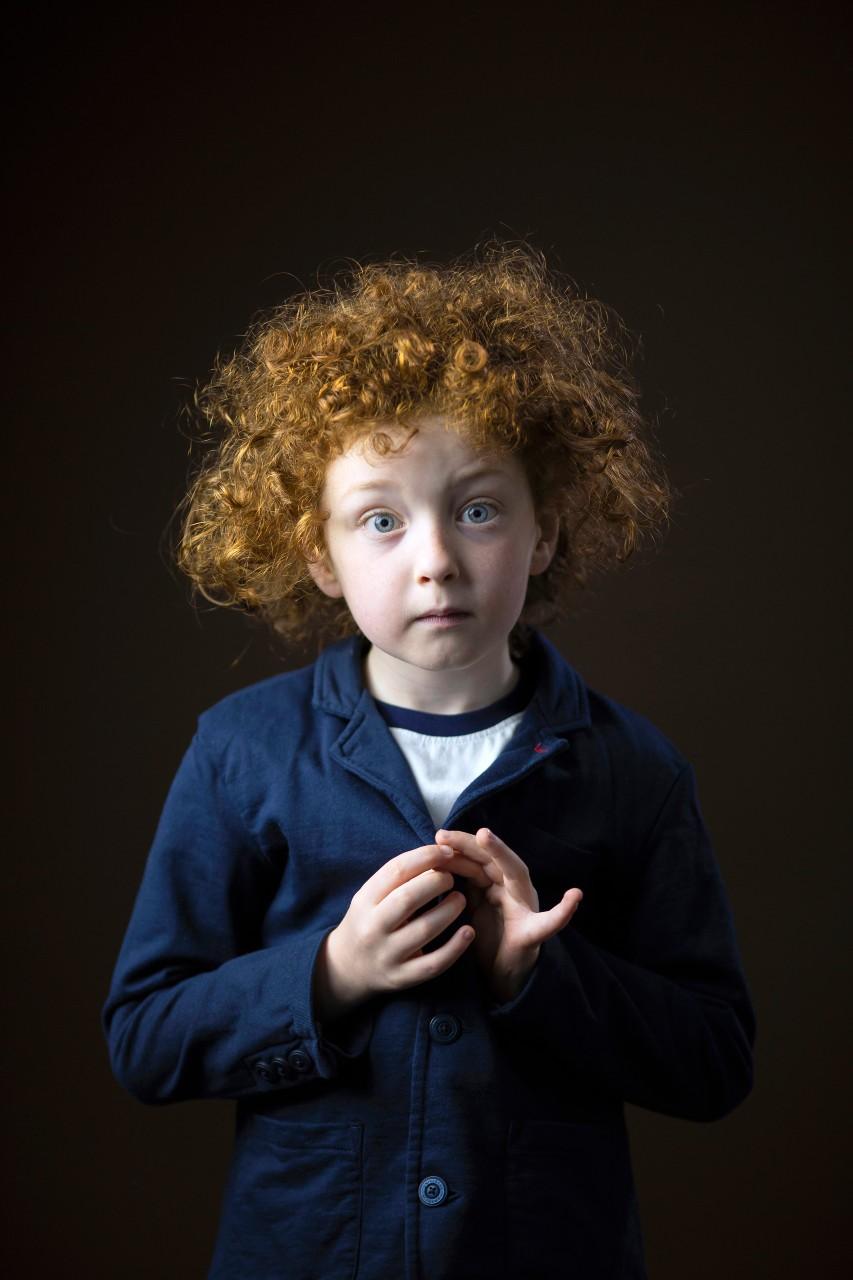
Alexander lives in Scotland but his parents are eastern European and Middle Eastern

Kieran says the one place where he found a totally different attitude was Jamaica, where nobody he talked to said they had experienced negative comments.
"I kept trying to work out why," he says. "But I think it might just be to do with it being such a diverse country. Difference is the norm and this is just another difference."
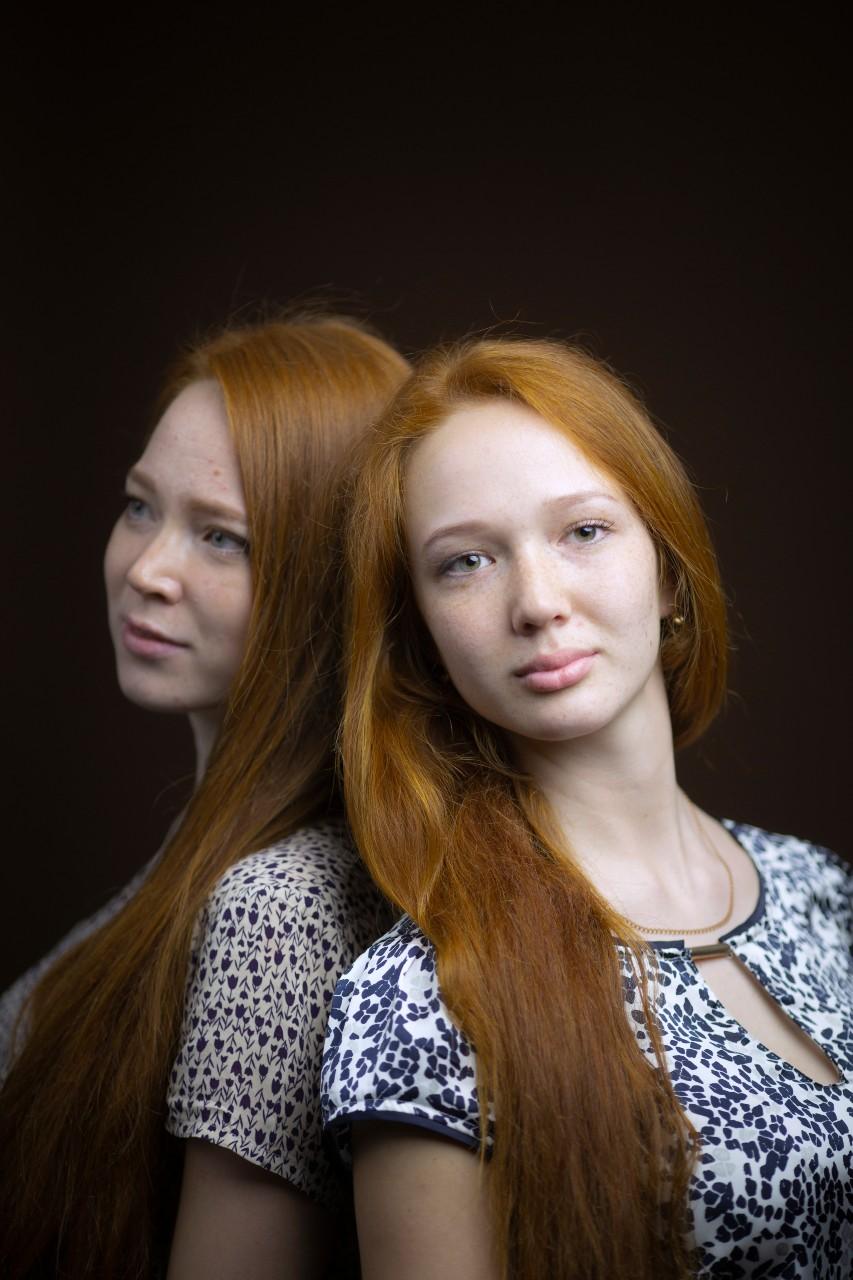
Tatiana and Valeria Korotaeva, Russia, born 1998 and 1999

Kieran says he began the project in 2013 in the run-up to Scotland's independence referendum, which got him thinking about the clichéd image of Scottish identity.
He says that even within Scotland, thought to have a higher percentage of natural redheads than anywhere else in the world, people with ginger hair were a small minority.
He wanted to show how even that tiny section of humanity was not an homogenous group.
"The ginger hair is how people see us Scots," he says. "I thought 'I want to use that cliché' and show that even in this tiny group there is diversity of look, background and opinion.
"If you live here, you realise the Scots are an incredibly diverse varied group."
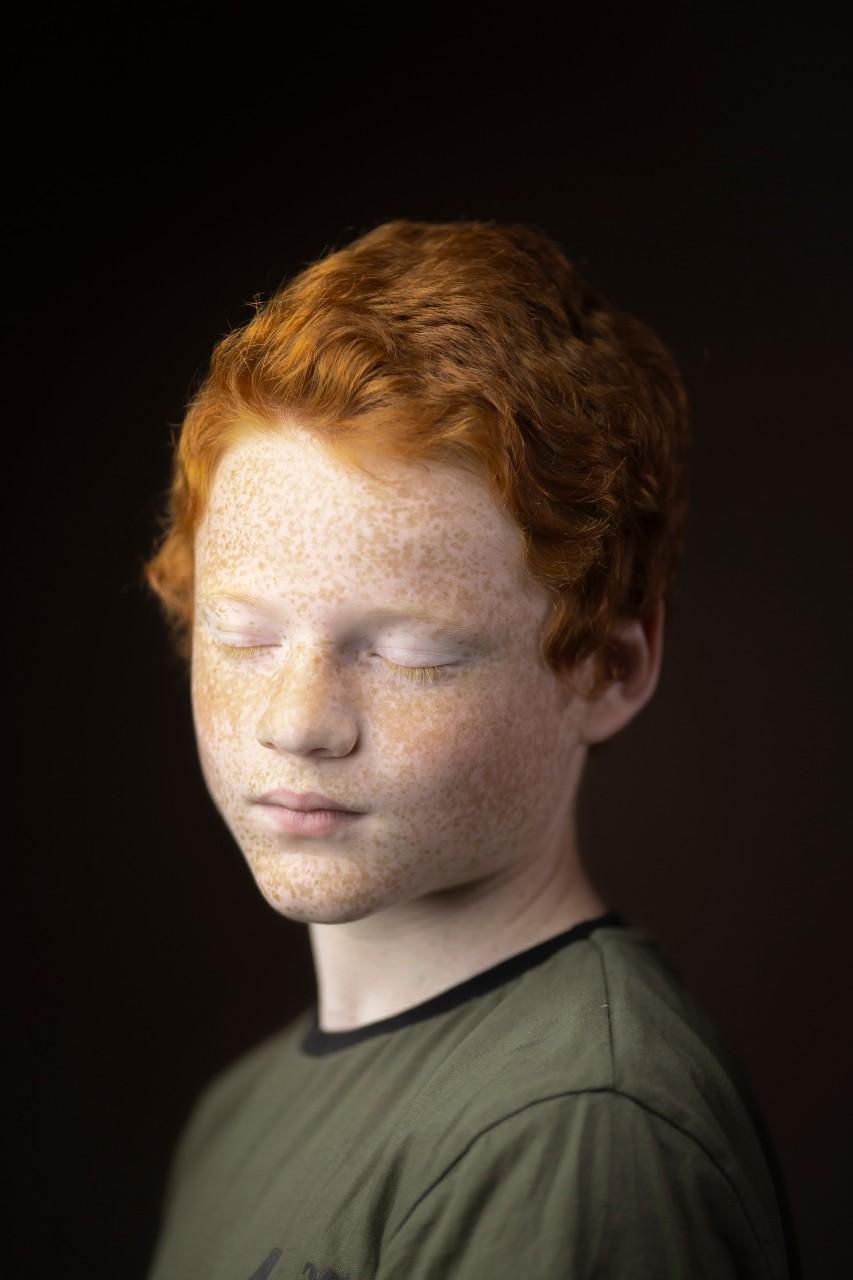
Jamie Hallam's great granddad was from India

At the same time, he made a visit to the National Gallery of Scotland where he discovered that the artists of the Renaissance had celebrated, even revered, ginger hair.
"I went in the Renaissance room and noticed that every single painting had a ginger person in it," he says.
"I thought it was funny that southern European painters were documenting Middle Eastern characters, usually Jesus and Mary, as ginger.
"That intrigued me because these are people that are seen as divine."
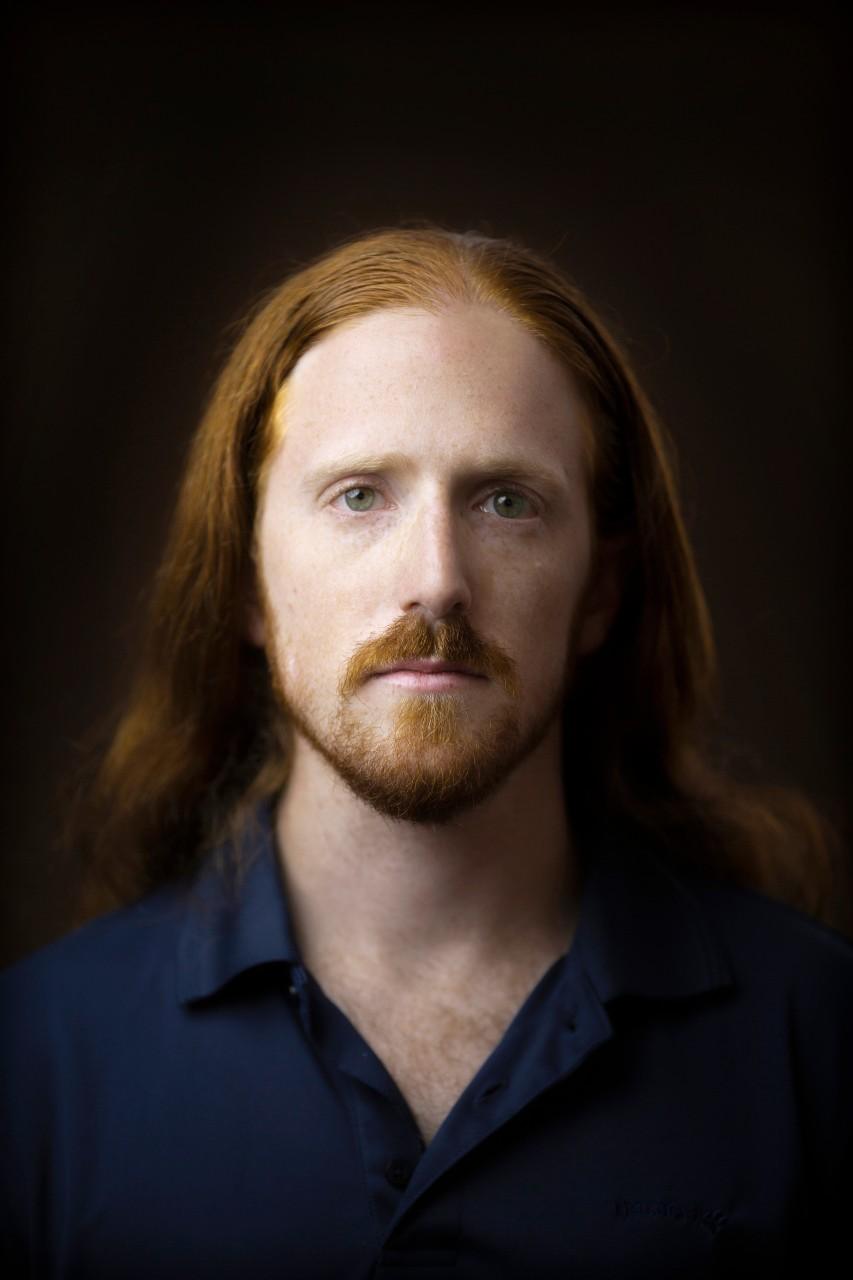
Gilad Belkin, Israel, born 1988

Kieran says seeing these divine characters with ginger hair made him see that normal people had the same dignity. That is why there are no famous ginger-haired people in the book.
"I did not want people to be distracted by some famous ginger person," he says.
"I want to look at normal, everyday people, your neighbour basically, and see that person is amazing, if you look."
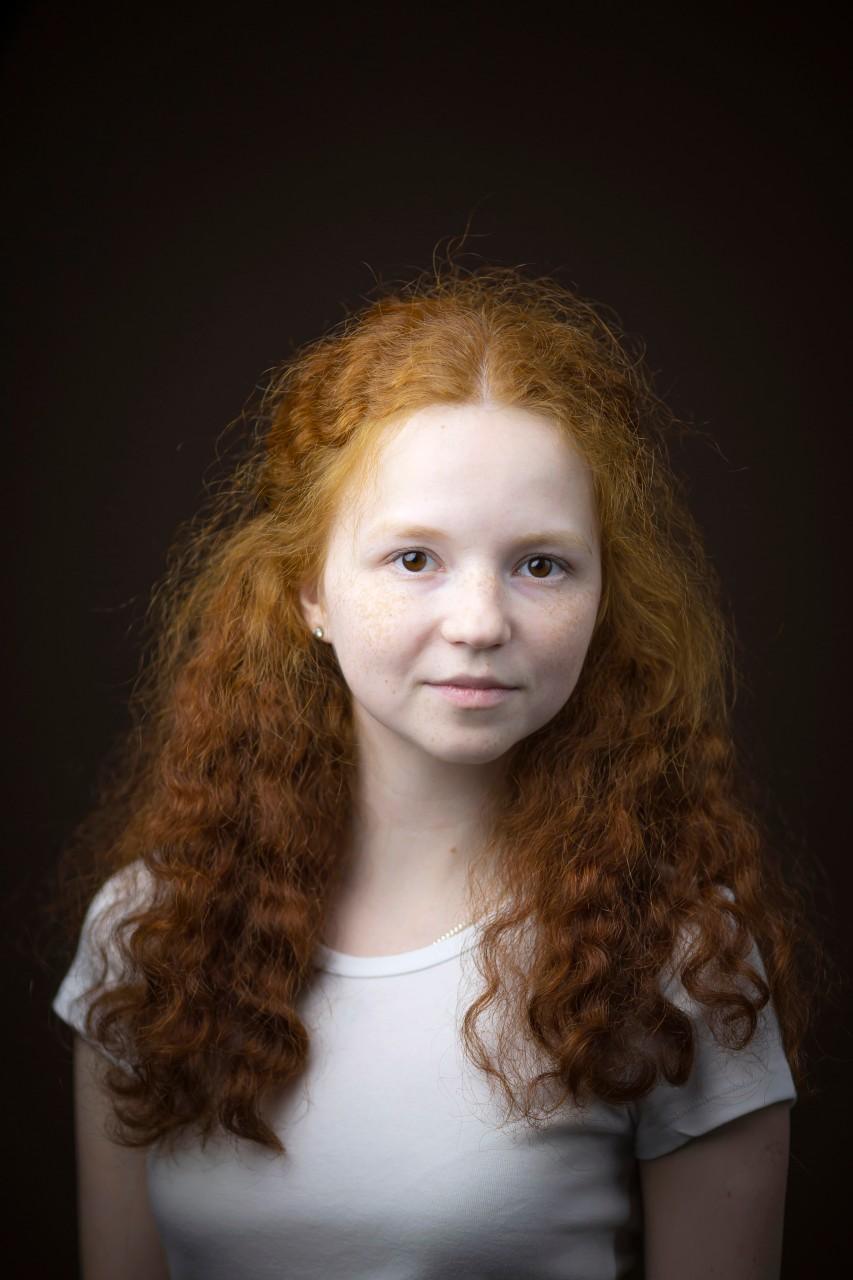
Sveta Ni, Russia, born 1996

It had been thought ginger hair was controlled by a single gene, MC1R, with versions passed on from both parents. However, more recent discoveries have suggested eight genes could be involved.
Less than 2% of the world's population are thought to have red hair.
In Scotland, the figure is thought to be about 13% - approximately 700,000 people.

Jordan DeLeon, Jamaica, born 2016
Scotland is such a ginger hot spot that when Kieran appealed on social media for red-haired people to be photographed he was overwhelmed by the response.
The same was true in the Russian city of Perm, where he also put out a social media call.
"My local assistant did not believe it was going to be a big thing and then he was inundated with people," Kieran says.
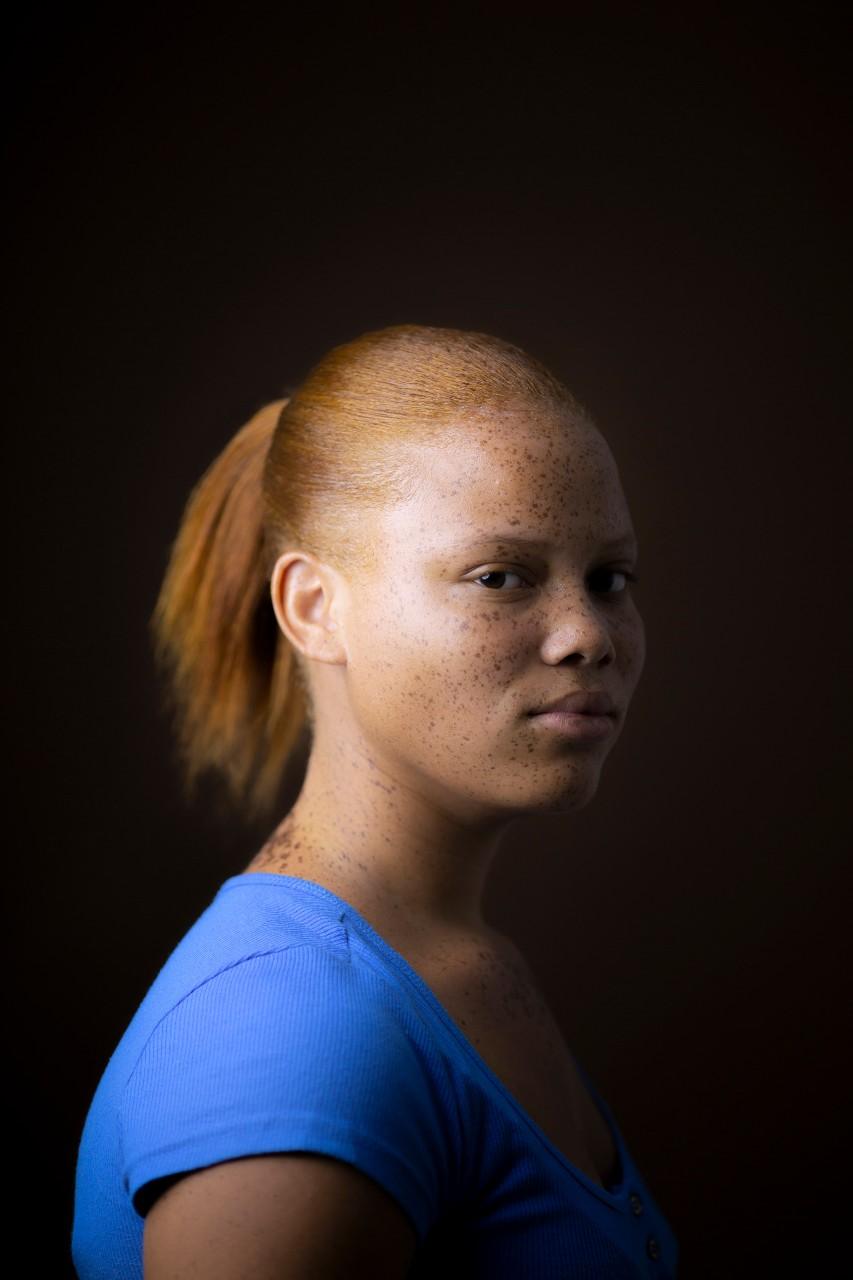
Marteka Nembhard, Jamaica, born 2005
The book is published on Friday 20 November, external and Kieran says: "I hope everyone can stare and wonder and enjoy the beauty of humanity.
"But also they can see themselves and understand that they've come from somewhere across deep-time. We are all part of a travelling species and I wanted to make those connections."

Photographer Kieran Dodds wanted to show the connections around the world of people with red hair
All images copyright Kieran Dodds/Panos Pictures
- Published11 December 2018
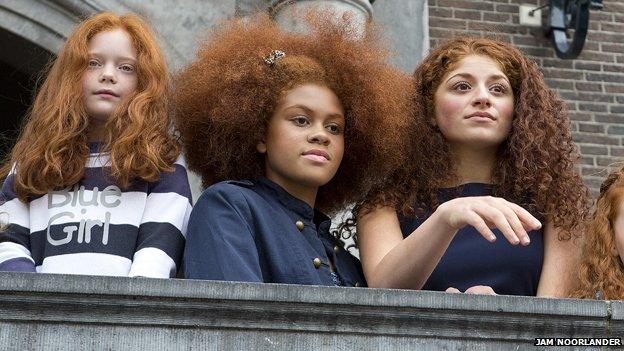
- Published11 November 2014
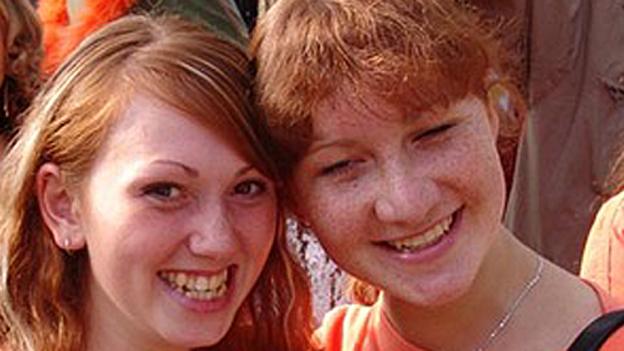
- Published10 August 2013
